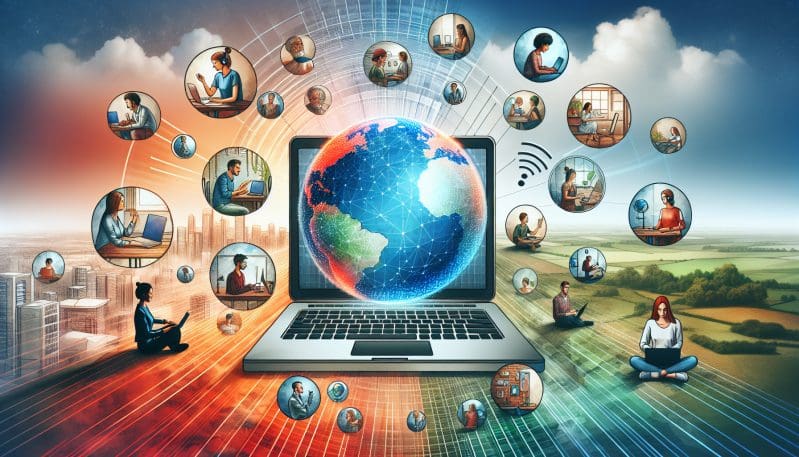Remote Work Revolution: Inclusivity or Isolation?
- Home
- Remote Work Revolution: Inclusivity or Isolation?
- Editors Desk
- January 12, 2024
- 0 Comments
In recent years, a seismic shift has rippled through the world of work, forever altering the fabric of professional life. The pandemic, a catalyst for change, has dismantled the traditional office structure, replacing it with a digital landscape where remote work has become the new norm. But at ‘No Worker Left Behind’, we cannot help but ask—what cost does this change entail? Does the remote work revolution herald an era of inclusivity, or is it a precursor to an upsurge in worker isolation and burnout?
The rise of remote work has ostensibly provided a significant leap towards inclusivity, creating opportunities for those who were previously marginalized. Individuals with disabilities, caregivers, and parents have found a newfound flexibility that accommodates their needs far better than the rigid 9-to-5 office schedule ever did. The ability to design a workday around personal commitments and health requirements has been one of the greatest boons of this revolution. It echoes a sentiment that work can, and should, adapt to the worker—not the other way around.
However, beneath the surface of this newfound freedom lurks a silent adversary: isolation. Remote work, for all its advantages, also brings the challenge of diminished face-to-face interaction. The spontaneous conversations by the water cooler, the communal lunch breaks, and the collaborative energy of a shared space—are all but memories. As a myriad of workers toggle between Zoom calls and Slack messages, the lack of physical connection can lead to a sense of alienation and disconnection from the company culture and colleagues.
Furthermore, the blurred boundaries between work and life may contribute to a rise in burnout. The ‘always on’ culture, exacerbated by the digital tether of remote work, leaves few sanctuaries of disconnection. Without a clear demarcation between office and home, the mental health of workers is at risk, with longer hours becoming an unspoken expectation rather than a choice.
Here, we draw a critical comparison with discussions led by the World Economic Forum on the future of work. While their dialogues cover the intersection of work, worker and workplace, ‘No Worker Left Behind’ delves deeper into the nuanced layers that often escape the broader narratives. We aim to highlight the dimensional realities faced by those transitioning to remote work and how it shapes their daily lives.
To foster a remote work environment where connection and well-being thrive, businesses must be intentional with their strategies. It is essential to create structured online interactions that allow for informal bonding—virtual coffee breaks, social hours, and team-building activities that are not strictly work-related. Moreover, establishing ‘right to disconnect’ policies can help maintain a healthy work-life balance, safeguarding mental health.
Leaders must also emphasize the importance of an inclusive workplace culture that extends beyond physical walls. Regular check-ins, transparent communication channels, and offering support for mental wellness are key steps towards ensuring that employees feel valued and connected to the organization’s mission and to one another.
In conclusion, the remote work revolution has the potential to be a move towards inclusivity if handled with care and understanding of its complex implications. ‘No Worker Left Behind’ champions an approach where remote work is not just about where we work, but how we work together to create a more inclusive, connected, and mentally healthy workforce.
The future of work is not a one-size-fits-all, and as the World Economic Forum continues to explore the evolving landscapes of work, Worker, and workplace, ‘No Worker Left Behind’ stands as a complementary voice. We shed light on the corners not thoroughly examined, ensuring that every worker truly has a place in tomorrow’s workplace—regardless of where that ‘place’ might be.


Leave A Comment